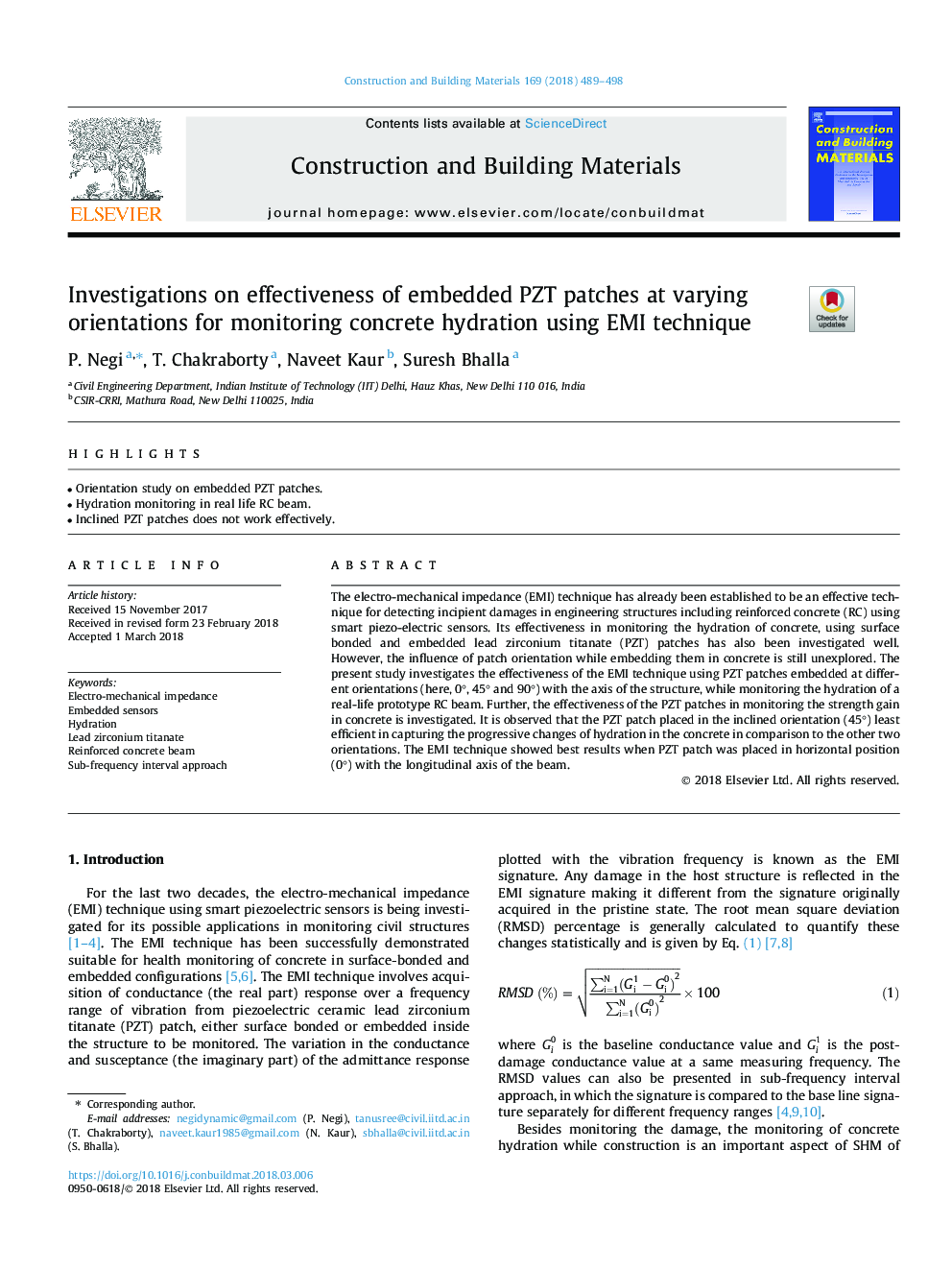| Article ID | Journal | Published Year | Pages | File Type |
|---|---|---|---|---|
| 6714550 | Construction and Building Materials | 2018 | 10 Pages |
Abstract
The electro-mechanical impedance (EMI) technique has already been established to be an effective technique for detecting incipient damages in engineering structures including reinforced concrete (RC) using smart piezo-electric sensors. Its effectiveness in monitoring the hydration of concrete, using surface bonded and embedded lead zirconium titanate (PZT) patches has also been investigated well. However, the influence of patch orientation while embedding them in concrete is still unexplored. The present study investigates the effectiveness of the EMI technique using PZT patches embedded at different orientations (here, 0°, 45° and 90°) with the axis of the structure, while monitoring the hydration of a real-life prototype RC beam. Further, the effectiveness of the PZT patches in monitoring the strength gain in concrete is investigated. It is observed that the PZT patch placed in the inclined orientation (45°) least efficient in capturing the progressive changes of hydration in the concrete in comparison to the other two orientations. The EMI technique showed best results when PZT patch was placed in horizontal position (0°) with the longitudinal axis of the beam.
Related Topics
Physical Sciences and Engineering
Engineering
Civil and Structural Engineering
Authors
P. Negi, T. Chakraborty, Naveet Kaur, Suresh Bhalla,
